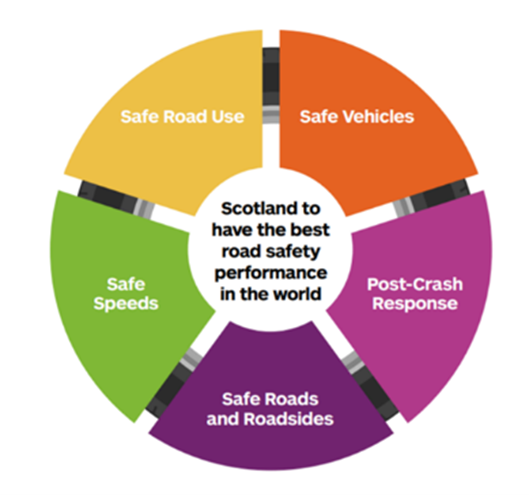Background and context
A National Speed Management Review is being undertaken to examine the potential effects of changes to speed limits across Scotland. This review, which flows from the second Strategic Transport Projects Review, is aimed at ensuring speed limits are safe and appropriate for all types of roads throughout Scotland.
Road safety in Scotland is at a critical time. National statistics indicate that collision on non-built up roads (roads with a speed limit of 40mph or higher), account for over 40% of the total number of reported casualties. They also account for 66% of those killed and over 40% of the total number of seriously injured.
Scotland’s Road Safety Framework to 2030
Scotland's Road Safety Framework to 2030 (2030 framework) sets out a vision for Scotland to have the best road safety performance in the world by 2030 and an ambitious long-term goal where no one is seriously injured or killed on our roads by 2050. It sets challenging targets for the years ahead, with a 50 per cent reduction in fatal and serious injuries and a 60 per cent reduction in child fatal and serious injuries by 2030.
The 2030 framework fully embeds the Safe System approach to road safety and is internationally recognised as best practice in road safety, with people at its centre.
A Safe System involves those who manage and design the roads as well as those who use them; each is responsible for, and must contribute to, eradicating fatal and serious injuries. Ultimately, all road users are expected to use the roads safely and comply with the rules.

Speed limits in a Safe System are based on aiding collision avoidance and reducing the speed at which impacts occur. This ensures the body’s limit for physical trauma is not reached or exceeded.
Speed management
Speed Management is internationally recognised as an active approach that requires (or persuades) drivers to adopt speeds that offer mobility without compromising safety. It can include techniques to improve safety such as setting lower speed limits, road design, drivers’ education and enforcement.